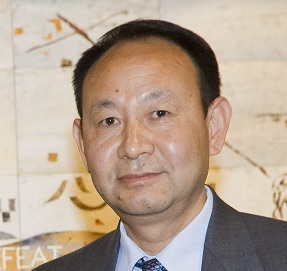
Project Summary:
Brain arteriovenous malformations (AVMs) are abnormalities of blood vessels, in which direct connections form between arteries and veins. The high-pressure arterial blood injects into fragile cerebral veins and leads to a high risk of brain haemorrhage and stroke. AVMs occur in approximately 0.1% of the population. The annual bleeding risk for an AVM is 4%. Each haemorrhage carries a 50% risk of death or significant disability. AVMs affect predominantly children and young adults and have the potential to destroy their lives.
Current treatments rely on physical methods to remove the abnormal vessels (surgery), or block the blood flow (injection of blocking material inside the vessels or irradiation of the AVMs), aiming to prevent rupture. Each of the methods has limitations and no effective treatment is available for large and deep AVMs (accounting for one third of all AVMs). There is an urgent need for an effective treatment for these young patients who face a high risk of sudden death or disability.
‘Vascular targeting’, i.e. deliberate induction of blood clotting (thrombosis), is emerging as a promising therapeutic tool for cancer. This technique utilizes molecular differences between tumour vessels and normal vessels. Specific binding to the unique molecules on the tumour vessel surface by antibodies linked to a thrombotic reagent induces thrombosis selectively in these vessels. Adaption of this technique for AVMs would make a very attractive treatment. Although unique molecules have not been identified on AVM vessels, radiation has the potential to induce specific molecule changes on the surface of AVM vessels, making vascular targeting a possibility for these lesions.
We have worked on vascular targeting as a prospective treatment for AVMs for more than 10 years. We have studied the structural and molecular characteristics of surgically removed human AVMs, and found over-expression of some molecules on AVM vessel surface after radiation treatment in an animal model. We proved the feasibility of vascular targeting to block AVM vessels in the animal model. However optimization of the technique is needed to increase its safety and efficacy.
In this work, we will use a state-of-the-art molecular analysis technique (microarray) to screen the radiation-induced molecular changes (markers) on the surface of brain blood vessels and identify their binding partners (ligands) simultaneously. Microarrays have large number of ligands (each binding to a specific molecule) immobilized in precise positions on their surfaces. If a cell carries specific molecules on its surface, it will bind to the corresponding ligand areas on the array. The cell binding locations indicate which molecules are on the cells’ surfaces.
Cells from the internal surface of human brain blood vessels will be cultured in our laboratory and then treated with radiation. Two groups of molecules on the surface of irradiated cells, named proteins and glycans (sugars), will be screened by their ligands, i.e. antibodies and lectins respectively. The results will reveal the radiation-induced surface molecules and their binding ligands. In the next stage of this project, the ligands that bind selectively to irradiated cells will be chemically linked with a thrombotic agent and used as vascular-targeting agents to induce blood clotting in AVM vessels.
Successful development of the technique will provide a treatment for some of the untreatable AVMs and improve the efficacy of current treatments.



 The Brain Foundation is the largest, independent funder of brain and spinal injury research in Australia. We believe research is the pathway to recovery.
The Brain Foundation is the largest, independent funder of brain and spinal injury research in Australia. We believe research is the pathway to recovery.